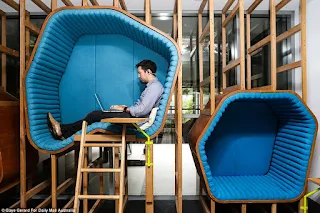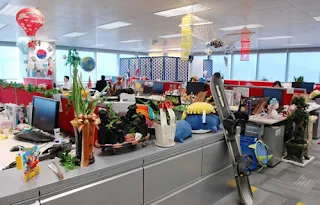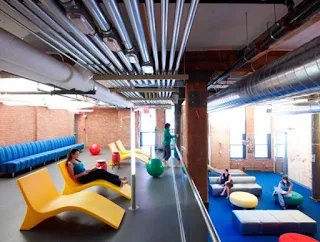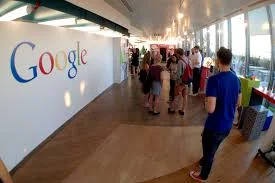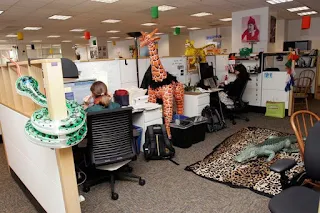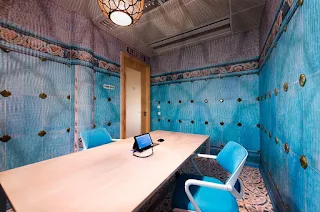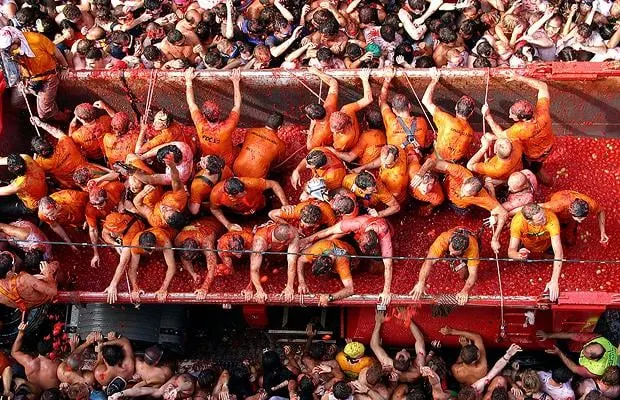The Google story begins in 1995 at Stanford University. Larry Page was considering Stanford for grad school and Sergey Brin, a student there, was assigned to show him around. By some accounts, they disagreed about nearly everything during that first meeting, but by the following year they struck a partnership. Working from their dorm rooms, they built a search engine that used links to determine the importance of individual pages on the World Wide Web. They called this search engine Backrub.
Soon after, Backrub was renamed Google (phew). The name was a play on the mathematical expression for the number 1 followed by 100 zeros and aptly reflected Larry and Sergey's mission “to organize the world’s information and make it universally accessible and useful.”
Over the next few years, Google caught the attention of not only the academic community, but Silicon Valley investors as well. In August 1998, Sun co-founder Andy Bechtolsheim wrote Larry and Sergey a check for $100,000, and Google Inc. was officially born. With this investment, the newly incorporated team made the upgrade from the dorms to their first office: a garage in suburban Menlo Park, California, owned by Susan Wojcicki (employee #16 and now CEO of YouTube). Clunky desktop computers, a ping pong table, and bright blue carpet set the scene for those early days and late nights. (The tradition of keeping things colorful continues to this day.)
Even in the beginning, things were unconventional: from Google’s initial server (made of Lego) to the first “Doodle” in 1998: a stick figure in the logo announcing to site visitors that the entire staff was playing hooky at the Burning Man Festival. In the years that followed, the company expanded rapidly hiring engineers, building a sales team, and introducing the first company dog, Yoshka. Google outgrew the garage and eventually moved to its current headquarters (a.k.a.“The Googleplex”) in Mountain View, California. The spirit of doing things differently made the move.
Soon after, Backrub was renamed Google (phew). The name was a play on the mathematical expression for the number 1 followed by 100 zeros and aptly reflected Larry and Sergey's mission “to organize the world’s information and make it universally accessible and useful.”
Over the next few years, Google caught the attention of not only the academic community, but Silicon Valley investors as well. In August 1998, Sun co-founder Andy Bechtolsheim wrote Larry and Sergey a check for $100,000, and Google Inc. was officially born. With this investment, the newly incorporated team made the upgrade from the dorms to their first office: a garage in suburban Menlo Park, California, owned by Susan Wojcicki (employee #16 and now CEO of YouTube). Clunky desktop computers, a ping pong table, and bright blue carpet set the scene for those early days and late nights. (The tradition of keeping things colorful continues to this day.)
Even in the beginning, things were unconventional: from Google’s initial server (made of Lego) to the first “Doodle” in 1998: a stick figure in the logo announcing to site visitors that the entire staff was playing hooky at the Burning Man Festival. In the years that followed, the company expanded rapidly hiring engineers, building a sales team, and introducing the first company dog, Yoshka. Google outgrew the garage and eventually moved to its current headquarters (a.k.a.“The Googleplex”) in Mountain View, California. The spirit of doing things differently made the move.
The relentless search for better answers continues to be at the core of everything we do. Today, with more than 50,000 employees in 50 different countries, Google makes hundreds of products used by billions of people across the globe, from YouTube and Android to Smartbox and, of course, Google Search. Although we’ve ditched the Lego servers and added just a few more company dogs, our passion for building technology for everyone has stayed with us from the dorm room, to the garage, and to this very day.
Google is often ranked as one of the top tech companies to work for and with good reason. The company is extraordinarily employee-friendly.
On Fortune magazine's list of the best companies to work for, Google ranked first in 2007, 2008 and 2012 and fourth in 2009 and 2010. Google was also nominated in 2010 to be the world's most attractive employer to graduating students in the Universum Communications talent attraction index. Google's corporate philosophy includes principles such as "you can make money without doing evil," "you can be serious without a suit," and "work should be challenging and the challenge should be fun.
On Fortune magazine's list of the best companies to work for, Google ranked first in 2007, 2008 and 2012 and fourth in 2009 and 2010. Google was also nominated in 2010 to be the world's most attractive employer to graduating students in the Universum Communications talent attraction index. Google's corporate philosophy includes principles such as "you can make money without doing evil," "you can be serious without a suit," and "work should be challenging and the challenge should be fun.
As a motivation technique, Google uses a policy often called Innovation Time Off, where Google engineers are encouraged to spend 20% of their work time on projects that interest them. Some of Google's newer services, such as Gmail, Google News, Orkut, and AdSense originated from these independent endeavors. In a talk at Stanford University, Marissa Mayer, Google's Vice President of Search Products and User Experience until July 2012, showed that half of all new product launches in the second half of 2005 had originated from the Innovation Time Off.
New employees are called "Nooglers," and are given a propeller beanie cap to wear on their first Friday.
In addition to a great array of benefits and employee perks, Google takes measures to ensure its employees work in extremely unique environments that are designed to foster creativity and out-of-the-box thinking. Additionally, it makes going to work a far more enjoyable experience when there are slides, bikes, basketball courts, ping pong tables and video games to enjoy.
As it stands now, Google has offices across the globe, and each one of its major offices has its own unique vibe and design sensibility. That said, we’ve compiled some of the more intriguing photos of Google office photos from around the world. From the insane and creative layout of the company’s Zürich office to a rooftop mini-golf course in Toronto, Google’s offices are anything but boring.
Google's headquarters in Mountain View, California, is referred to as "the Googleplex", a play on words on the number googolplex and the headquarters itself being a complex of buildings. The lobby is decorated with a piano, lava lamps, old server clusters, and a projection of search queries on the wall. The hallways are full of exercise balls and bicycles. Many employees have access to the corporate recreation center. Recreational amenities are scattered throughout the campus and include a workout room with weights and rowing machines, locker rooms, washers and dryers, a massage room, assorted video games, table football, a baby grand piano, a billiard table, and ping pong. In addition to the recreation room, there are snack rooms stocked with various foods and drinks, with special emphasis placed on nutrition. Free food is available to employees 24/7, with the offerings provided by paid vending machines prorated based on and favoring those of better nutritional value.
Google's extensive amenities are not available to all of its workers. Temporary workers such as book scanners do not have access to shuttles, Google cafes, or other perks.
For more details =
